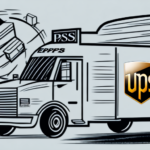Reopening Your Business During a Pandemic: Expert Strategies for Success
The COVID-19 pandemic has significantly disrupted businesses worldwide, resulting in closures and financial setbacks. According to the World Bank, the global GDP contracted by approximately 3.3% in 2020 due to the pandemic. As governments lift restrictions and businesses strategize their reopening plans, numerous challenges arise. Leaders with offshore expertise have compiled comprehensive advice to help businesses navigate this complex landscape safely and effectively.
The Challenges of Reopening During a Pandemic
Ensuring Health and Safety
One of the foremost challenges is safeguarding the health of employees and customers. Implementing necessary precautions is vital to minimize virus transmission. Key measures include:
- Social Distancing: Maintain safe distances between individuals to reduce close contact.
- Sanitization: Conduct regular deep cleanings of premises to disinfect surfaces.
- Personal Protective Equipment (PPE): Provide masks, gloves, and other PPE to employees.
- Hand Sanitizing Stations: Install sanitizing stations at strategic locations within the business.
According to the Centers for Disease Control and Prevention (CDC), these measures can significantly reduce the transmission of COVID-19 and other infectious diseases.
Adapting to Reduced Foot Traffic
Businesses face reduced foot traffic as consumers remain cautious about visiting physical locations. To address this, companies can:
- Enhance Online Presence: Strengthen e-commerce platforms to reach customers digitally.
- Offer Delivery and Curbside Pickup: Provide options that align with customers' safety preferences.
- Implement Virtual Services: Offer consultations or services remotely where applicable.
A McKinsey & Company report indicates that businesses swiftly adapting to online models recovered faster than those that did not.
Managing Financial Impacts
The financial strain of reopening can be significant, requiring additional investments in safety measures and marketing. According to the Small Business Administration (SBA), approximately 30% of small businesses that closed during the pandemic may not reopen without financial assistance.
Staying Compliant with Evolving Regulations
Health guidelines and regulations can change rapidly, necessitating businesses to stay informed and adapt promptly. Regularly consulting authoritative sources like the CDC and the World Health Organization (WHO) ensures compliance with the latest health recommendations and requirements.
Preparing Your Business for Safe Reopening
Conducting a Comprehensive Risk Assessment
Before reopening, perform a thorough risk assessment of your business premises to identify and mitigate potential hazards. Key steps include:
- Sanitation and Hygiene Plan: Develop detailed protocols for cleaning and maintaining hygiene standards.
- Handling Suspected Cases: Establish clear procedures for managing suspected COVID-19 cases.
- Employee Training: Ensure all employees are trained and informed about the implemented safety measures.
Implementing Flexible Work Arrangements
Flexible work options, such as remote work or staggered schedules, can reduce the number of employees onsite, facilitating physical distancing and minimizing transmission risks.
Maintaining Transparent Communication
Regularly update employees and customers about any changes or updates to safety protocols. Transparent communication fosters trust and confidence in your business's commitment to safety.
Adapting to the New Normal in Business Operations
Embracing Advanced Hygiene and Safety Measures
Integrate higher levels of hygiene practices and safety measures to protect staff and customers. This involves:
- Using approved cleaning products and sanitizers.
- Providing PPE to all employees and, where necessary, to customers.
- Ensuring regular handwashing and sanitizing across the business premises.
Leveraging Technology for Remote Work
Utilize technology to facilitate remote work and virtual interactions, ensuring business continuity while maintaining employee safety.
Engaging with Customers in New Ways
Develop innovative strategies to engage with customers, maintain their trust, and adapt to their evolving preferences.
Prioritizing employee health remains crucial. Provide regular health screenings, maintain a safe work environment, and ensure prompt response to any health-related issues.
Maintaining Financial Stability During Uncertain Times
Developing a Robust Financial Plan
- Detailed Budgeting: Account for new safety measures and potential revenue fluctuations.
- Accessing Financial Aid: Utilize government assistance programs to support business operations.
- Business Continuity Plan: Create a roadmap for recovery and financial resilience.
Diversifying Revenue Streams
Enhance financial stability by exploring new markets, expanding product or service offerings, and partnering with other businesses for mutually beneficial opportunities.
Implementing sustainable practices can also attract environmentally conscious consumers, adding value to your brand.
Monitoring Cash Flow
Closely manage cash flow by overseeing accounts receivable and payable, controlling inventory, and maintaining disciplined expense management to ensure operational liquidity.
Effective Communication Strategies for Employees and Customers
Communicating with Employees
- Comprehensive Training: Educate employees on new safety protocols and guidelines.
- Multiple Communication Channels: Use emails, meetings, and internal memos to disseminate information.
- Feedback Mechanisms: Encourage and address employee feedback to improve safety measures.
Training should include role-playing scenarios and providing scripts to ensure consistent and effective communication with customers about safety measures.
Communicating with Customers
- Clear Information: Use signage, your website, and social media to inform customers about safety measures.
- Operational Updates: Notify customers about changes in hours or services.
- Responsive Feedback: Address customer concerns promptly to maintain trust and loyalty.
Open communication fosters customer confidence, encouraging them to return and continue supporting your business.
Leveraging Technology to Streamline Operations and Minimize Contact
Technology plays a pivotal role in safely reopening businesses by enhancing operational efficiency and reducing physical contact:
- Contactless Payments: Implement systems to minimize cash transactions.
- Virtual Consulting Platforms: Offer services without the need for in-person interactions.
- Online Sales Channels: Facilitate safe and convenient shopping experiences for customers.
- Automated Inventory Management: Reduce manual handling and errors through automation.
Additionally, support remote work with collaboration tools and secure communication platforms to maintain productivity while ensuring employee safety.
Preparing for Potential Future Outbreaks and Disruptions
While addressing the current pandemic, it's essential to prepare for future outbreaks and disruptions. Developing comprehensive protocols and contingency plans ensures business continuity during such events:
- Rapid Response Protocols: Establish clear procedures for responding to new outbreaks, including communication strategies and operational adjustments.
- Scenario Planning: Develop plans for various impact levels, such as changes in demand, workforce challenges, and supply chain disruptions.
- Flexible Operations: Maintain flexibility in supply chain and operational processes to adapt quickly to changing circumstances.
Conduct regular drills or simulations to test the effectiveness of continuity plans and identify areas for improvement. Consider long-term impacts on operations, such as reevaluating supply chains, exploring new markets, or investing in technologies that support remote work and collaboration.
The Role of Leadership in Successfully Reopening During a Pandemic
Effective leadership is crucial for successfully reopening businesses during a pandemic. Leaders must:
- Set Clear Objectives: Prioritize safety and operational continuity in strategic planning.
- Communicate Transparently: Ensure consistent and honest communication with employees and customers to build trust.
- Navigate Uncertainties: Manage regulatory compliance and adapt to shifting market conditions effectively.
- Balance Needs: Weigh the needs of employees and customers against financial pressures and compliance requirements.
Strong leadership fosters a positive work environment, motivates employees to adhere to safety protocols, and instills customer confidence in the business's commitment to their well-being.
Staying Informed and Up-to-Date on the Latest Industry Developments
In a rapidly changing environment, staying informed about the latest industry developments is essential for business resilience. Businesses can stay updated by:
- Attending Conferences and Webinars: Learn about new trends and best practices from industry experts.
- Networking: Engage with other business leaders and professionals to exchange ideas and insights.
- Partnering with Trade Organizations: Access valuable resources and support through industry groups.
- Subscribing to Publications: Stay informed with the latest news and updates from trusted industry publications and newsletters.
By keeping abreast of regulatory changes, emerging risks, and new opportunities, businesses can adapt more effectively and maintain a competitive edge in the marketplace.
In conclusion, reopening during a pandemic requires meticulous planning, adaptive management, and a commitment to safety and innovation. By following established guidelines, leveraging technology, and prioritizing clear communication, businesses can navigate these challenging times successfully and emerge stronger.




















